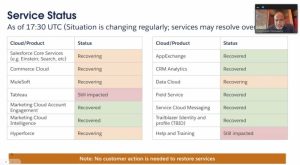Every leader must reach a point where they look in the mirror and conduct a gut-check by asking themselves a series of honest questions. However, before getting to the hard realities, it is essential to fully understand what it takes to successfully lead people.
Let’s face it, it’s not possible to arrive at sustainable leadership overnight. Reaching that stage entails strong foundational work and pillars that may take months if not years. You need to create a compelling vision that inspires people to work alongside you to help you achieve it. Additionally, you must ensure the vision is stacked on a skeleton of personal and organizational values that are not merely displayed as words on a wall but are practiced in conference rooms and hallways. You also need to make sure you are headed in the right direction so as to avoid any disastrous outcomes.
Now let’s look at the three reality checks that will allow you to assess your leadership aptitude:
Reality Check #1: Leaders Need to Motivate People with Inspiration
In the traditional top-down leadership style of management, bosses foster a worker bee culture and use positional power and control to follow through their vision.
What they miss out on is this important fact: self-motivation comes from deep within a person. You may try to hand down tasks from up above and pound all the motivational-guru talk into a person’s head through a seminar but if the person you’re trying to motivate doesn’t believe in your vision, they won’t stick around. Rather, follow a leadership approach that will motivate and inspire people to get out of bed in morning. Communicate a compelling vision, empower your team and promote shared decision-making to inspire your employees.
Reality Check #2: Leaders Need to Recognise the Critical Elements Necessary to Attract and Retain the High-Calibre Talent
Now that you have inspired your employees and have ensured they are ready to rock it, it is time to figure out how to keep them going. One effective way to do that is by aligning your performance management plan with the best talent management practices. Ask yourself simple questions like these to measure the critical elements needed to attract and retain the most competent employees:
- Are my employees aware of what is expected of them?
- Do my employees have the materials and equipment they need to perform their tasks efficiently?
- Do my employees have the opportunity to do what they do best every day?
- Have my top performers received the recognition they deserve, in the last seven days?
- Do immediate managers/supervisors seem to genuinely care about them as people?
Reality Check #3: Leaders Need to Look in the Mirror and Ask, “Does My Behaviour Increase Trust?”
Let’s face it, trust is the bedrock you must base your leadership on. Interestingly, while trust seems like an abstract concept, leadership behaviours that encourage trust can be measured and improved upon.
There are some behaviours that are culturally rooted in the leadership structures of some great organisations celebrated for high employee engagement. Among those trusted behaviours that boost performance and define the sort of the interaction that takes place between leaders and employees day-to-day, some include:
- Listening first
- Practicing accountability
- Confronting reality
- Showing loyalty
- Extending trust
- Delivering results
- Creating transparency
- Clarifying expectations
- Keeping commitments
Trust begets trust. And when employees don’t feel trusted, workplace productivity and engagement often suffer. It’s up to you as a leader to demonstrate trust in your employees in consistent and thoughtful ways. Create a short questionnaire and toss it around for feedback to find out where you and your team stand with trusted behaviors. The results may surprise you.
Business & Finance Articles on Business 2 Community
(44)






